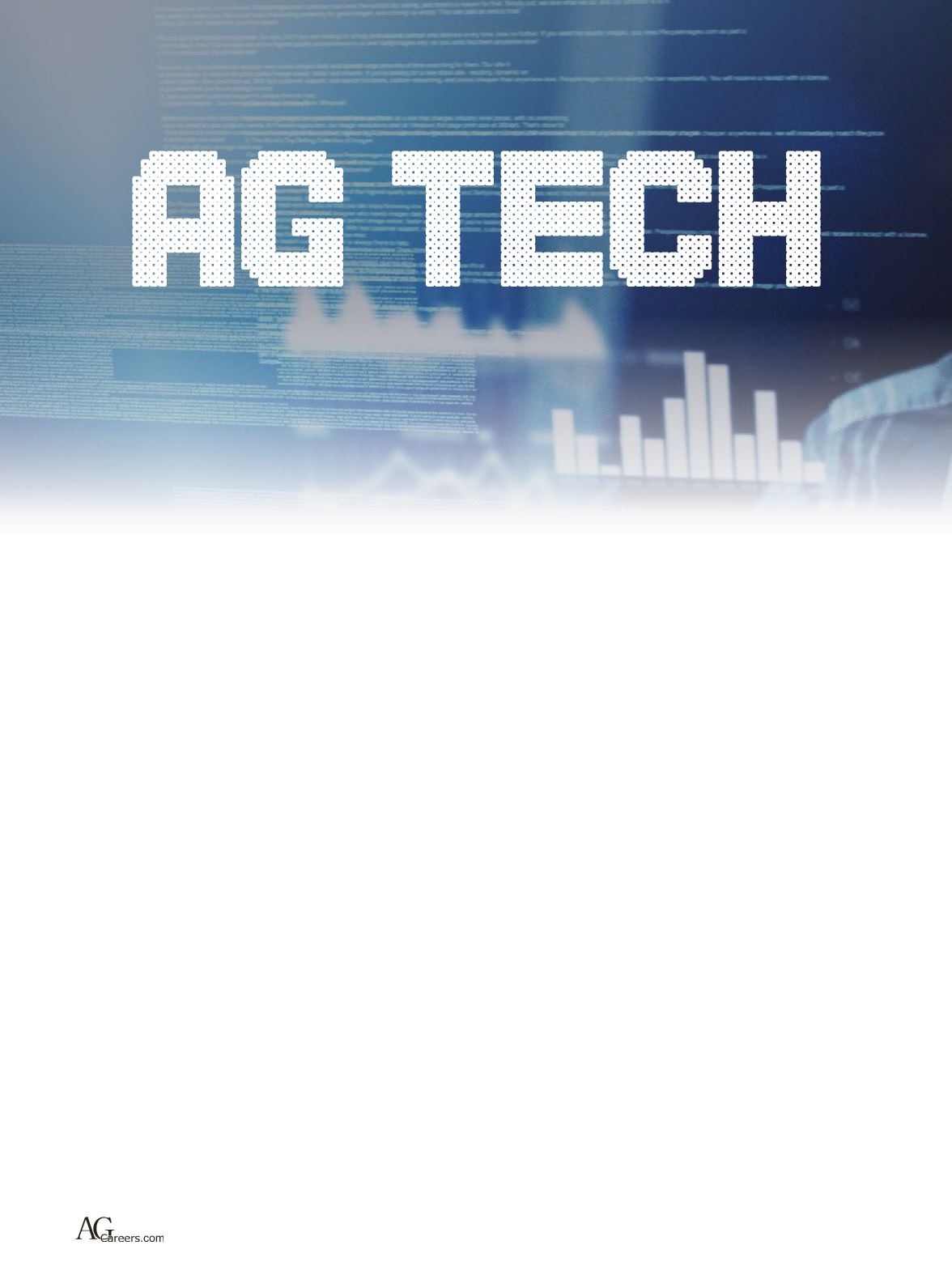

by Kathryn Doan,
AgCareers.comDirector of Global Business Development
AGRICULTURAL TECHNOLOGY,
or
simply put, Ag Tech, is enabling the
agriculture industry to grow and do more
with less. These professionals are working
simultaneously to deliver sustainability
with more nutritious food, healthier land,
higher yields and reduced manual labour.
Canadian consumers are concerned
about the impacts of agriculture and
food production on climate change, and
they are expressing those concerns with
their purchasing dollars. Consumers want
sustainable qualities without missing
out on food quality. Also, tastes are
changing and include novel ingredients,
world food, alternative proteins, local
food, and nutraceuticals.
The solution is agricultural
technology’s seemingly endless
applications facilitating the production
of quality, nutritious food, more
sustainably throughout the supply chain.
Some solutions involve cutting waste
through operating more directly with
producers (i.e. consumers purchasing
directly from farms or their online stores).
Other solutions involve sensor supported,
data-driven, decision making, used by
some fruit field crop producers, orchards,
and vineyards to decrease water and
inputs consumption, while maintaining or
even increasing yields at the same time
as increasing efficiency and sustainability.
Still others include efficiencies in food
processing where they are combining
food, plant and animal sciences, such as
breeding for specific traits that improve
both cultivation and culinary experiences.
Stephen Betthany, Director of
Operations, Robes Inc. has long been
associated with green ventures starting
with the Greenbelt Foundation. When
asked “is the Cannabis industry Ag Tech?”,
he described a compliance-based
industry that often grows indoors and
where tech is essential to meet the
“rigours of the supply chain.” For those
companies integrated from cultivation to
consumer, those rigours include
reporting on physical quantities and
product specifications to Health Canada
and other concerned agencies during
cultivation, harvest, processing,
transportation, packaging, and marketing.
High-quality assurance standards,
regionally based high growth
organizations and so much compliance,
led the cannabis industry to sensor
technology and in turn automatic data
capture. The industry is working in
partnership with Seneca College on both
software development to support
business and compliance requirements
as well as course curriculum for those
seeking a career in the cannabis industry.
In the farming world, sensor and
robotic technology that supports data
collection and reduction in manual labour
could be the next frontier. Manual labour
is one of the greatest challenges on farms
due to availability, cost, and social change.
Any technology that can augment manual
labour represents value as well as higher
level, higher wage employment oppor-
tunities for those involved in developing
and selling the technology.
COVID-19 has increased comfort
levels with technology and highlights its
usefulness. “Still though, producers often
need an incentive to capture data,” says
Betty-Jo Almond, General Manager at
AgSights. Once captured, further data
analysis is not pursued, so there is no
apparent value. Although, many would
benefit from just a little more information
in an easily “digestible format” to
understand where they are and to
WHAT IS
ALL ABOUT?
>>>
8
A
g
& F
ood
C
Areer
g
uide
















